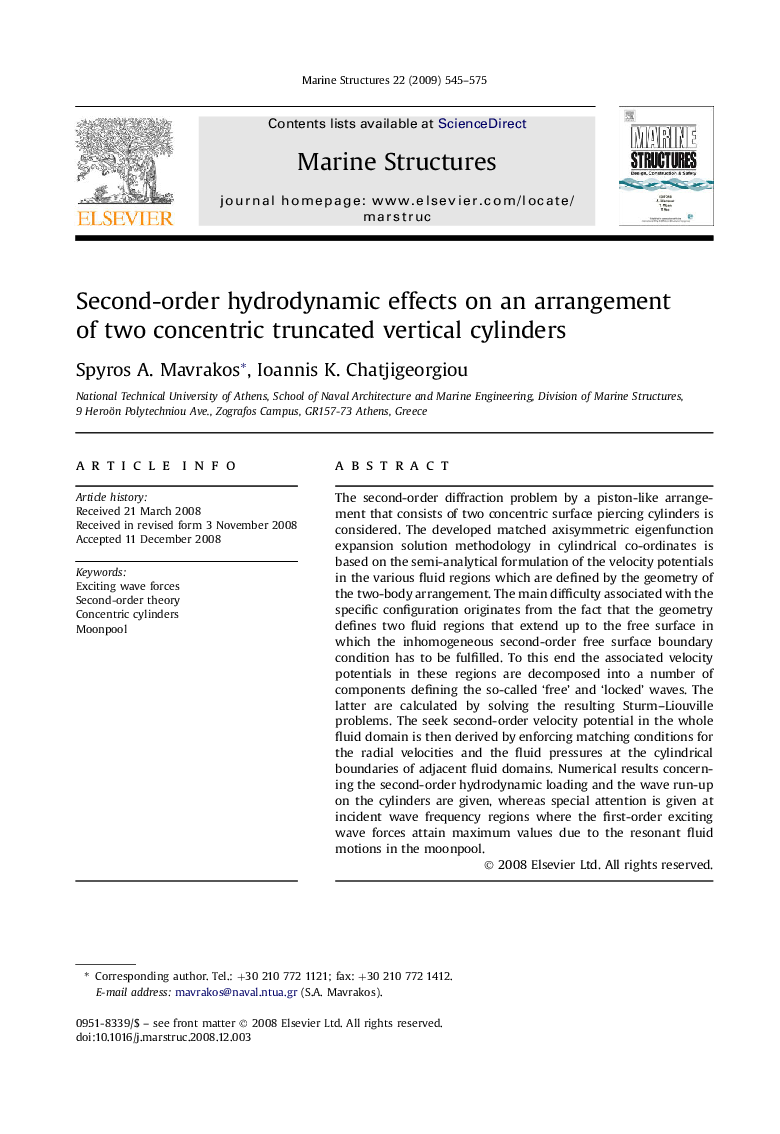| Article ID | Journal | Published Year | Pages | File Type |
|---|---|---|---|---|
| 294318 | Marine Structures | 2009 | 31 Pages |
The second-order diffraction problem by a piston-like arrangement that consists of two concentric surface piercing cylinders is considered. The developed matched axisymmetric eigenfunction expansion solution methodology in cylindrical co-ordinates is based on the semi-analytical formulation of the velocity potentials in the various fluid regions which are defined by the geometry of the two-body arrangement. The main difficulty associated with the specific configuration originates from the fact that the geometry defines two fluid regions that extend up to the free surface in which the inhomogeneous second-order free surface boundary condition has to be fulfilled. To this end the associated velocity potentials in these regions are decomposed into a number of components defining the so-called ‘free’ and ‘locked’ waves. The latter are calculated by solving the resulting Sturm–Liouville problems. The seek second-order velocity potential in the whole fluid domain is then derived by enforcing matching conditions for the radial velocities and the fluid pressures at the cylindrical boundaries of adjacent fluid domains. Numerical results concerning the second-order hydrodynamic loading and the wave run-up on the cylinders are given, whereas special attention is given at incident wave frequency regions where the first-order exciting wave forces attain maximum values due to the resonant fluid motions in the moonpool.
